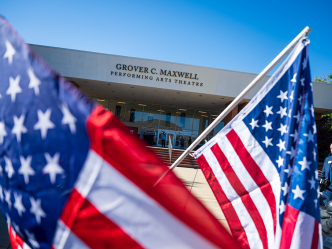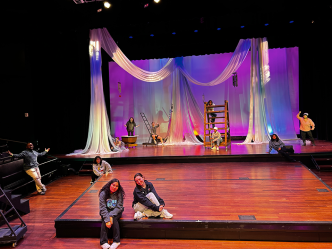With the 2018 midterm elections looming less than a month away, Georgia gubernatorial candidates Stacey Abrams and Brian Kemp are neck-and-neck according to the latest Atlanta Journal Constitution/Channel 2 poll.
In an election year with record voter registration numbers in the Peach State — and amid allegations of voter suppression — women voters could cast the deciding vote.
But for which side?
To find the answer, look to the issues, says Dr. Mary-Kate Lizotte, associate professor of political science in the Pamplin College of Arts, Humanities, and Social Sciences at Augusta University.
“Women, in particular Republican and Independent women, differ from men of the same party on the issues of government spending on childcare, public schools, welfare, social security and aiding the homeless,” Lizotte said. “Women typically favor increased spending on the issues.”
Examining data from 1994 to 2008, Lizotte, an expert on gender differences relating to public opinion, found that women are also more liberal than men of the same party on the issues of gay rights, government-guaranteed standard of living, and on the provision of more government services.
“For races where these issues have become salient, it might be the case that women would be more likely to be motivated to turn out to vote and to vote for candidates that have liberal positions on these issues,” she said.
That could be excellent news for the Abrams campaign, which has emphasized public education funding.
“Women in Georgia who believe in increasing public education funding should be more likely to vote for Abrams,” Lizotte said. “This may also be the case for several House races where the issue of tax reform and tax cuts has become salient.”
The confirmation of Justice Brett Kavanaugh to the Supreme Court earlier this month could also sway election results, albeit in less clearly defined ways.
Lizotte said the confirmation could either motivate conservative women voters to turn out or, alternatively, dissuade Republican women with Pro-Life leanings from voting entirely given the perception of a victory already. The expectation is a little more cut-and-dry for liberal women voters.
“The Kavanaugh confirmation is just one more reason to expect an increase in voter turnout among liberal women,” she said. “The Women’s March in 2017 and 2018 along with the increase in female interest in running for office all indicate that the Trump election and presidency had already galvanized liberal women voters.”
Finally, Lizotte said, although white women are divided politically — with college-educated white women swaying Left and those without a college degree favoring the Right — there was no such division among African American women voters.
“And as we’ve seen, African American women turn out at high rates and can influence elections like the Alabama Senate race,” she said.
 Augusta University
Augusta University




